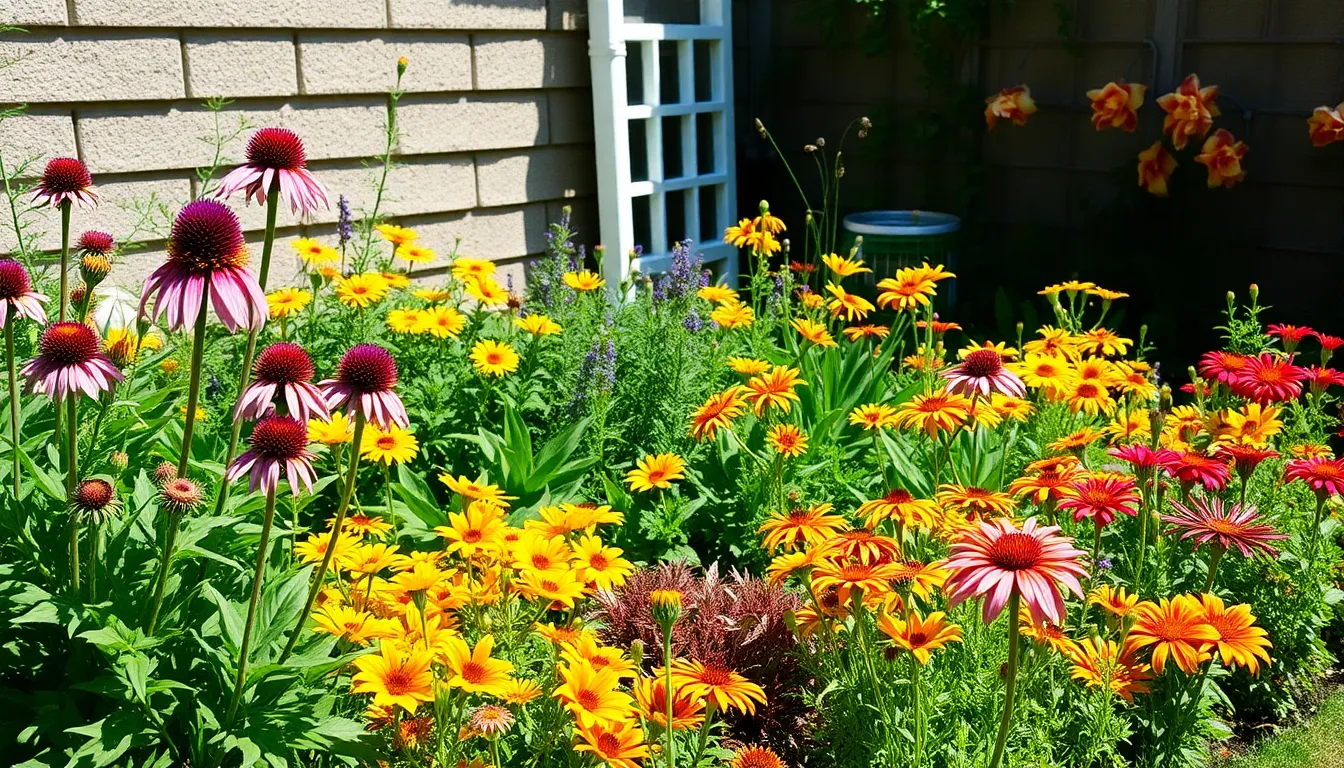There’s something truly magical about stepping into a garden where vibrant colors and lush greenery greet you, all without demanding every spare moment of your time. For both the novice gardener dipping their toes into the world of horticulture and the seasoned green thumb looking to simplify their routine, low-maintenance perennials offer a perfect solution. These resilient plants not only add an enduring splash of beauty to your outdoor space but also reward you with season after season of effortless growth.
Understanding the value of low-maintenance perennials is key to creating a garden that thrives with minimal intervention. By choosing plants that are naturally suited to your climate and soil conditions, you set yourself up for success while reducing the need for constant care. In this article, we’ll introduce you to 15 perennials that are as easy-going as they are stunning, ensuring your garden remains a source of joy rather than a chore.
You’ll discover an array of plants that cater to various tastes and landscaping goals, from ground covers to towering blooms. We’ll explore their distinct characteristics, planting tips, and care instructions, empowering you to make informed decisions tailored to your unique garden. Whether you’re aiming to enhance your existing landscape or embarking on a new planting project, these perennials will become cherished staples in your gardening repertoire, inviting you to enjoy the beauty of nature with ease and confidence.
Understanding Low-Maintenance Perennials

Low-maintenance perennials are an excellent choice for gardeners who want beautiful blooms without constant attention. They come back year after year, reducing the need for replanting and saving you both time and effort.
When selecting low-maintenance perennials, consider plants that are well-suited to your local climate and soil conditions. Native plants are often a great choice because they naturally thrive with minimal intervention in their home environment.
Ensure that your perennials are planted in the right spot, taking into account sunlight and soil needs. Most perennials prefer well-draining soil, so consider adding organic compost to enhance drainage and nutrient availability.
Watering is another crucial aspect of caring for low-maintenance perennials. Generally, these plants prefer deep, infrequent watering to encourage root growth, so water them thoroughly but less often.
- Check soil moisture by inserting your finger a couple of inches into the soil; water if it feels dry.
- Mulch around your plants to conserve moisture and suppress weeds.
For those with a bit more gardening experience, incorporating companion planting can enhance the growth of your perennials. Companion plants can help with pest control and improve soil fertility, creating a more resilient garden ecosystem.
Benefits of Perennials in Your Garden
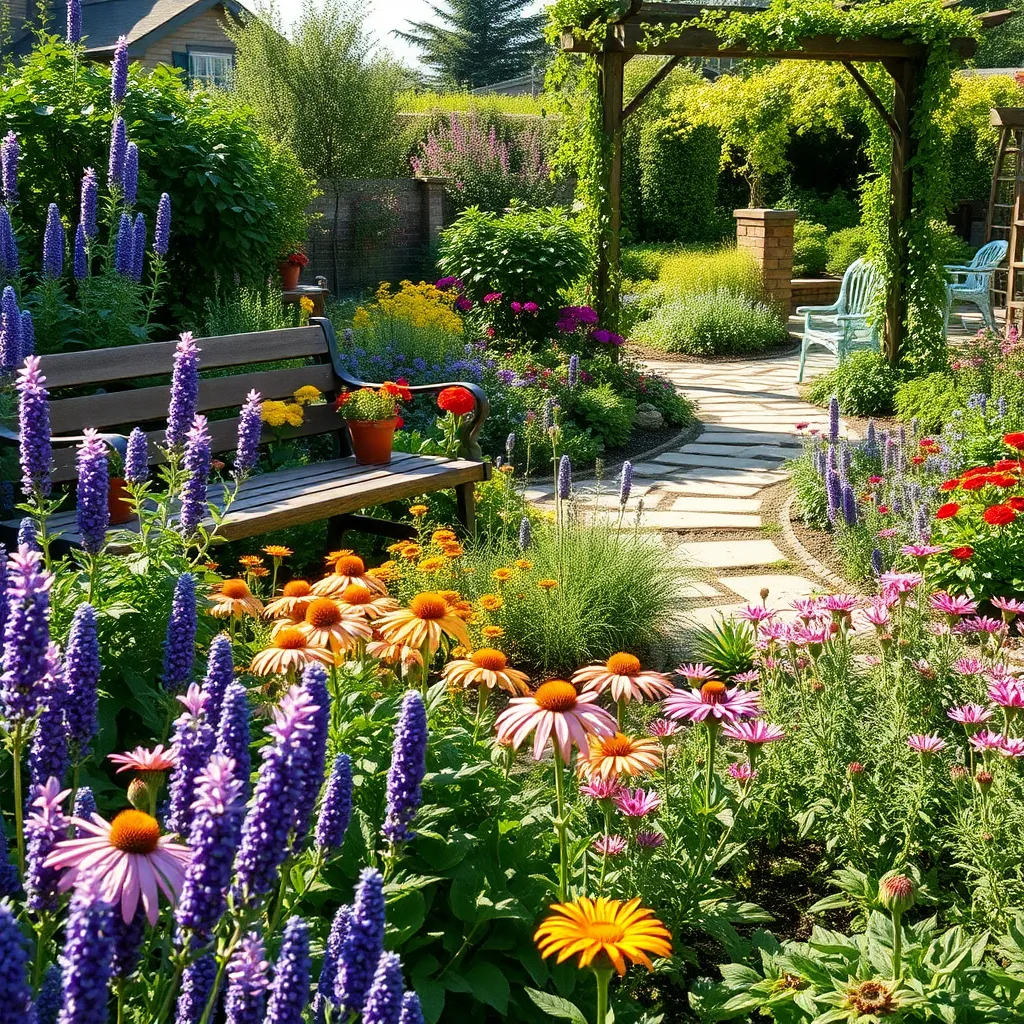
Perennials are a gardener’s best friend because they return each year, providing a reliable burst of color and life. By investing in perennials, you save on annual replanting, making them a cost-effective option for maintaining a vibrant garden.
One of the greatest benefits of perennials is their ability to establish a strong root system, which helps in reducing soil erosion. This deep rooting also means they require less frequent watering compared to annuals, making them ideal for gardeners looking to conserve water.
Moreover, perennials often require minimal maintenance once established. By choosing native perennials adapted to your local climate, you can significantly reduce the need for fertilizers and pest control, as these plants are naturally resistant to local pests and diseases.
For those interested in a more sustainable garden, perennials offer excellent habitat and food sources for beneficial insects like pollinators. Planting a variety of perennials with staggered blooming times ensures that bees and butterflies have a food source from spring through fall.
Choosing the Perfect Varieties

When selecting low-maintenance perennials, it’s essential to consider your local climate and soil type. Researching specific varieties that thrive in your region will save time and effort in the long run.
Opt for hardy varieties that can withstand both drought and occasional heavy rainfall. Plants like lavender and sedum are excellent choices because they require minimal watering once established.
For gardeners with limited sunlight, choose shade-tolerant perennials such as hostas or ferns. These plants not only survive but flourish with just a few hours of indirect light each day.
Advanced gardeners might explore companion planting to maximize space and resources. Pairing perennials with similar water and sunlight needs can create a more harmonious and low-maintenance garden.
Soil quality is a critical factor in perennial success, so consider conducting a soil test before planting. Amending soil with organic matter like compost can improve drainage and nutrient content, benefiting your plants.
Mulching around your perennials can significantly reduce maintenance by conserving moisture and suppressing weeds. Use organic mulch, such as shredded bark or straw, to keep the soil healthy and reduce the need for frequent watering.
Finally, pay attention to the mature size of your chosen perennials to avoid overcrowding. Allowing enough space for growth prevents competition for nutrients and reduces the need for transplanting later on.
Planting for Long-Lasting Beauty
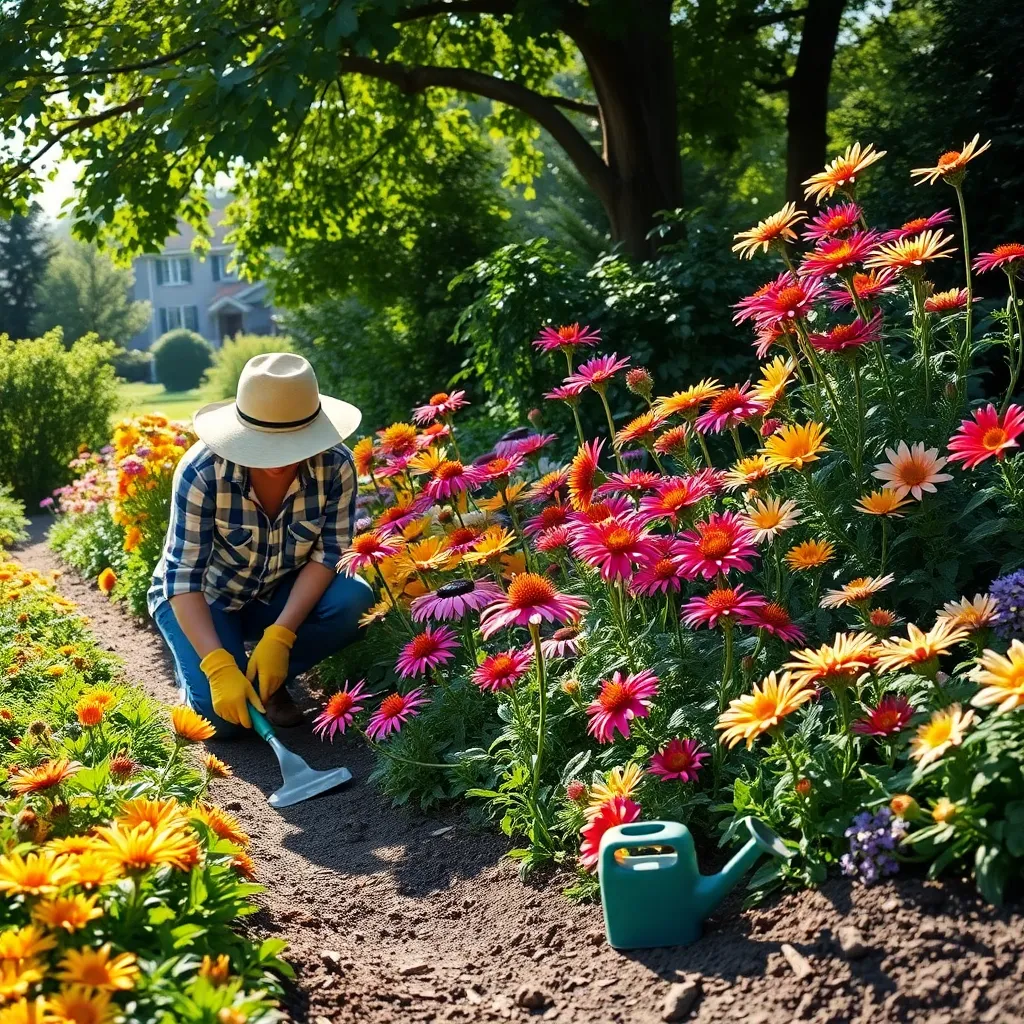
When aiming for long-lasting beauty in your garden, choosing perennials that thrive in your local climate is essential. Researching the hardiness zones for each plant ensures that they will flourish year after year with minimal intervention.
To achieve a lush, vibrant garden, consider the soil composition and drainage capabilities. Amending your soil with organic matter like compost can improve its structure and provide necessary nutrients for perennial roots.
Watering is a crucial aspect of maintaining your perennials; however, overwatering can be detrimental. Most perennials thrive with a deep watering once a week, promoting a resilient root system that can withstand dry spells.
For gardeners looking to extend the blooming season, stagger planting times and choose varieties with different bloom periods. This strategy not only ensures a continuous display of color but also supports a diverse ecosystem by attracting various pollinators.
Sunlight Needs for Perennials
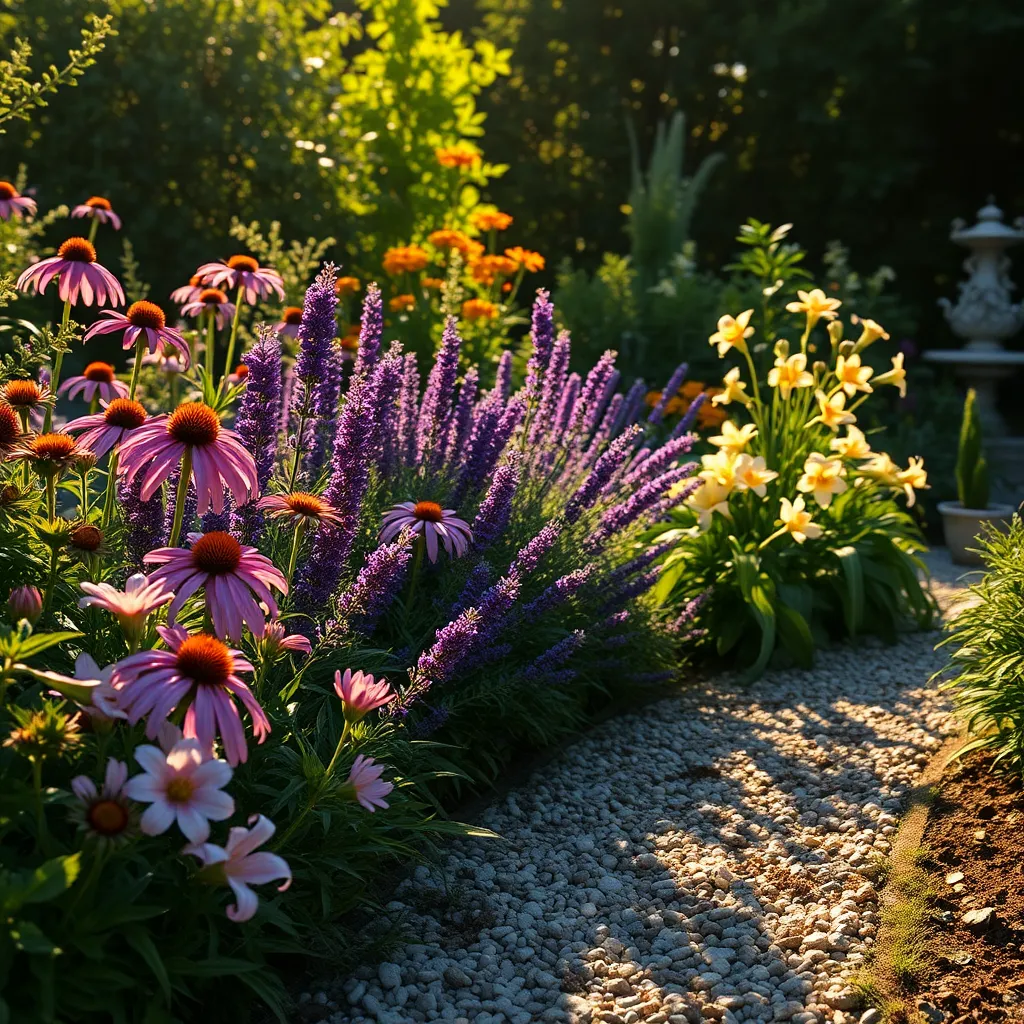
Understanding the sunlight needs of your perennials is crucial for their success in your garden. Most perennials thrive in full sun, defined as receiving at least six hours of direct sunlight per day.
However, there are also many beautiful perennials that prefer partial shade, requiring only four to six hours of sunlight. Examples of shade-loving perennials include hostas and astilbes, which add lush greenery and texture to garden spaces with dappled light.
It’s essential to observe your garden throughout the day to determine which areas receive the most sunlight. This assessment will help you decide precisely where to plant sun-loving varieties like daylilies and coneflowers.
For gardeners in regions with intense sunlight, providing some afternoon shade can prevent leaf scorch in sensitive plants. You can achieve this by planting taller plants strategically to cast shadows or by using garden structures like pergolas.
While beginners may focus on ensuring enough sunlight, experienced gardeners can experiment with microclimates within their gardens. Consider using reflective mulch to increase the amount of light available to underperforming plants, thereby enhancing their growth potential.
Soil Preparation and Conditioning
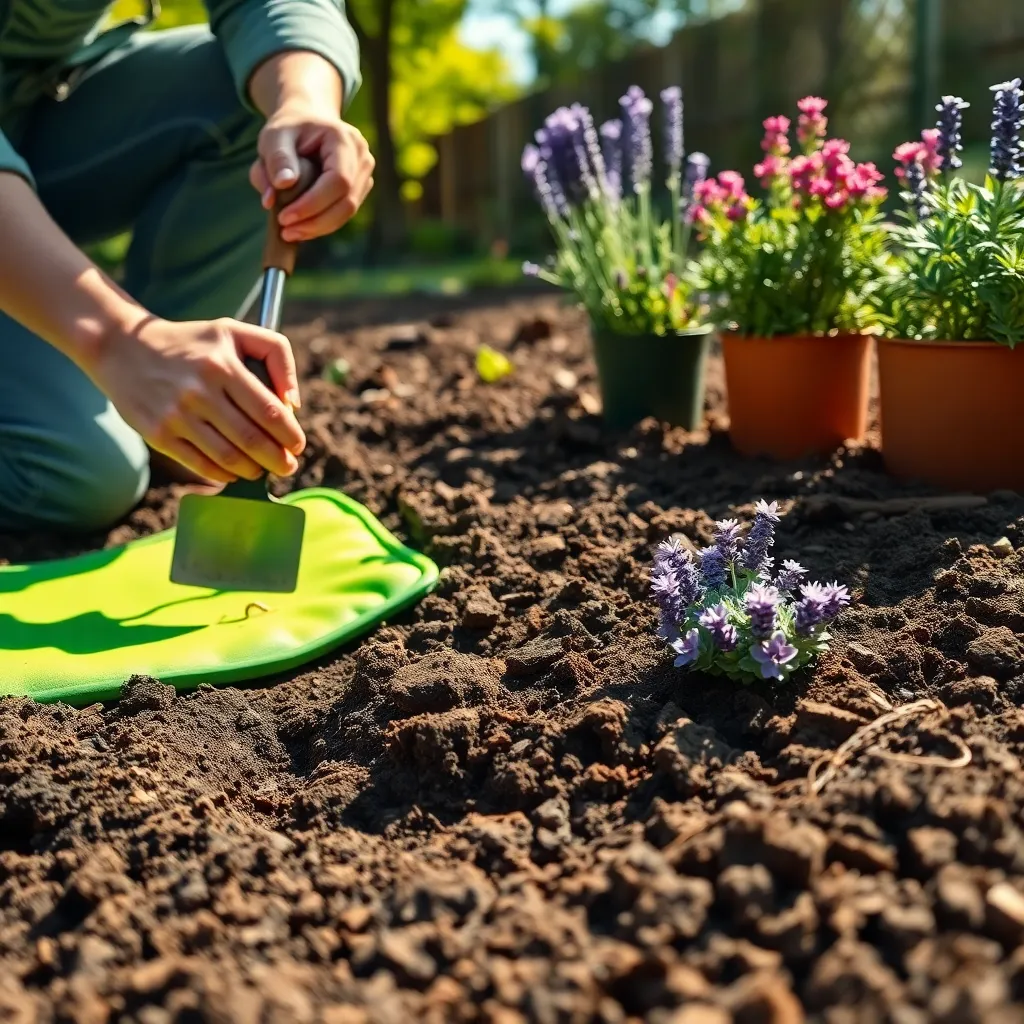
Ensuring your perennials thrive begins with proper soil preparation and conditioning. Start by assessing the texture of your soil, as most perennials prefer a well-drained mixture that retains some moisture but doesn’t become waterlogged.
To improve drainage and nutrient content, incorporate organic matter like compost or well-rotted manure into your garden beds. A layer of about two inches worked into the top six inches of soil will enhance its structure and fertility.
Testing your soil’s pH is a smart step, as it should generally fall between 6.0 and 7.0 for most perennials. If your soil is too acidic, add lime; if it’s too alkaline, consider incorporating sulfur or organic matter to adjust the pH.
For gardeners seeking an advanced tip, consider adding mycorrhizal fungi to your soil. This symbiotic organism can enhance nutrient uptake and improve plant resilience, offering an edge to those looking to maximize growth with minimal maintenance.
Efficient Watering Practices
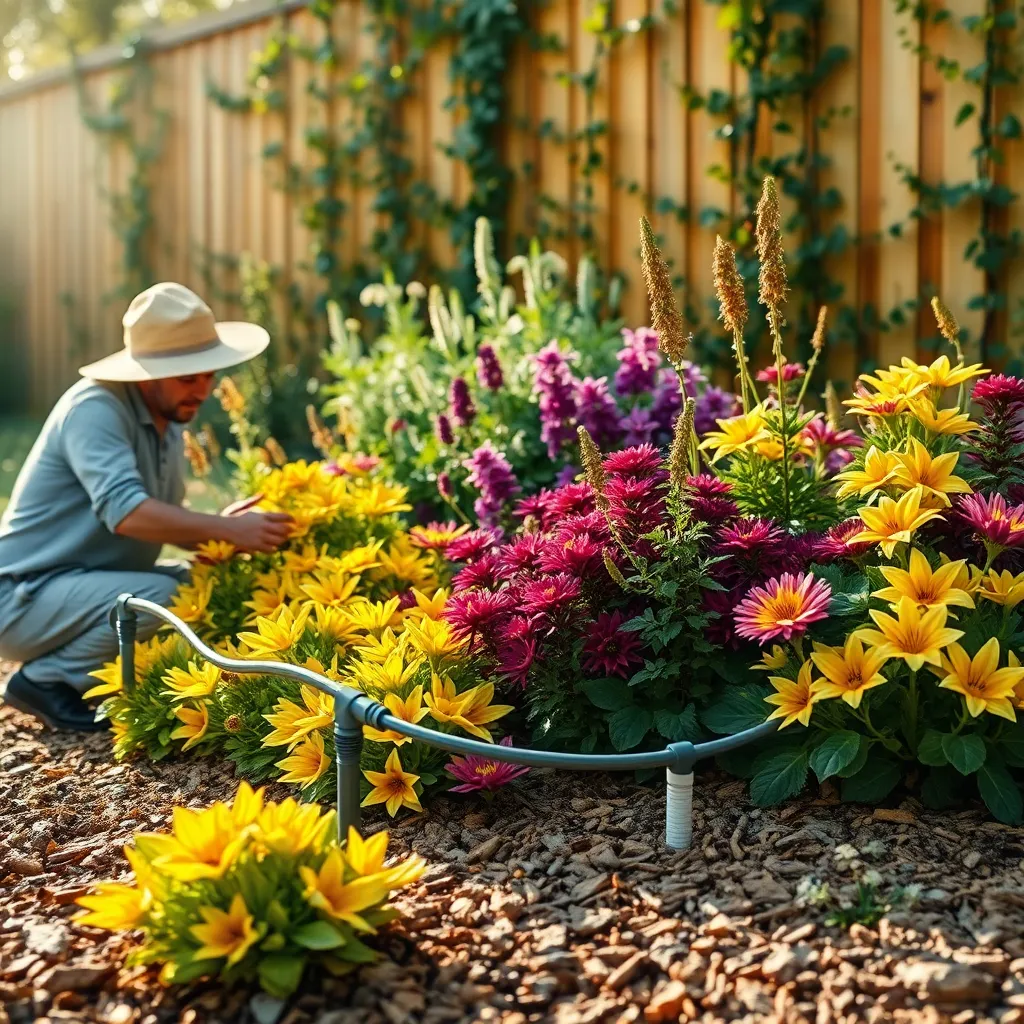
Proper watering is crucial to maintaining a healthy, low-maintenance perennial garden. Understanding your plants’ water needs can prevent both underwatering and overwatering, which can cause root rot or wilting.
Begin by assessing your soil type, as it affects how much water your plants need. Sandy soils drain quickly, requiring more frequent watering, while clay soils retain moisture longer.
To conserve water, consider implementing a drip irrigation system, which delivers water directly to the root zones. This method reduces water waste and ensures consistent moisture levels for your perennials.
Watering early in the morning is ideal, allowing plants to absorb moisture before the day’s heat. This practice also minimizes evaporation and fungal diseases that can develop when leaves remain wet overnight.
For a more advanced approach, use a moisture meter to monitor your soil’s moisture levels accurately. This tool helps fine-tune your watering routine, ensuring your perennials receive just the right amount of water.
Fertilizing for Optimal Growth
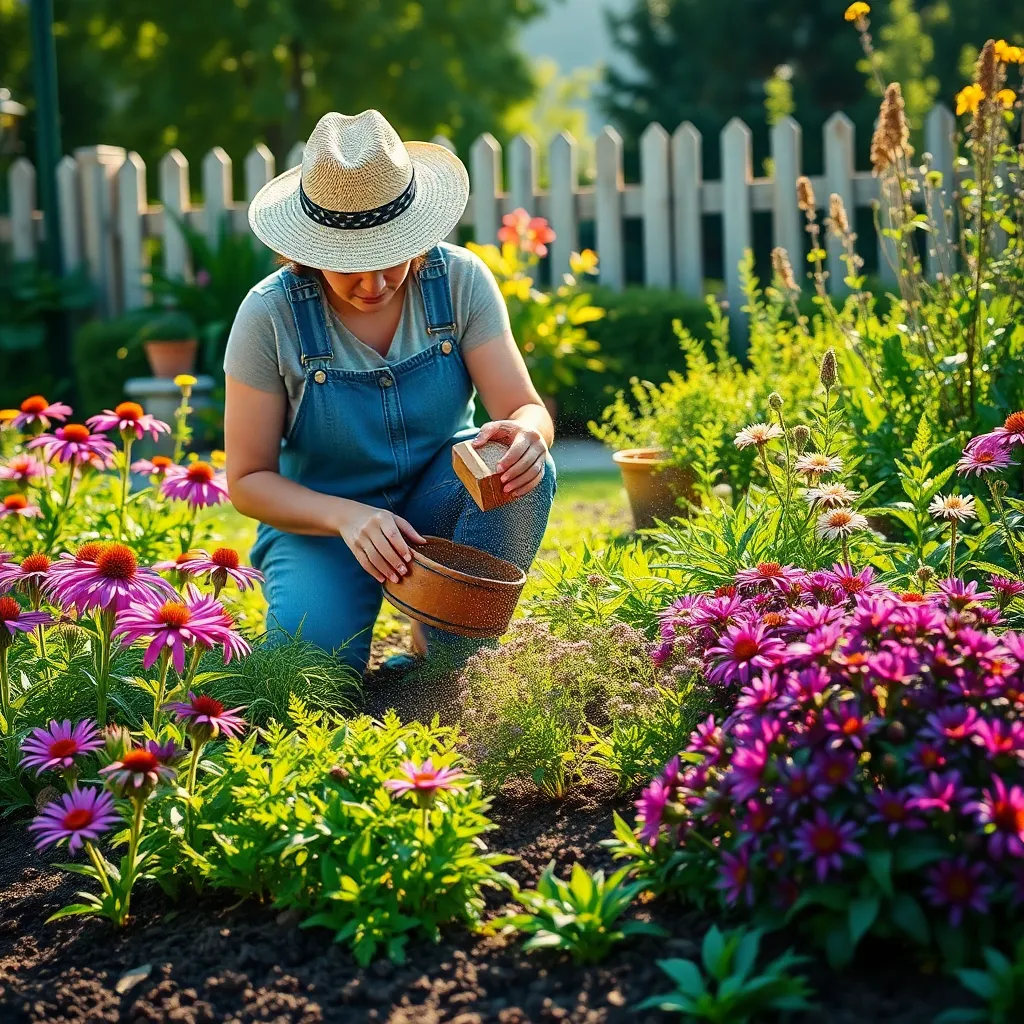
Fertilizing perennials is crucial for ensuring they thrive throughout the growing season. Start by using a balanced, slow-release fertilizer in early spring to provide a steady supply of nutrients.
To maximize growth, consider the specific nutritional needs of each plant, as some might benefit from additional phosphorus or potassium. For example, adding bone meal can enhance the root development of flowering perennials.
Avoid over-fertilizing, as this can lead to excessive foliage growth at the expense of blooms. Test your soil to determine nutrient deficiencies before applying fertilizers, allowing you to tailor your approach effectively.
For more experienced gardeners, consider using organic options like compost or well-rotted manure. These not only enrich the soil but also improve its structure and water retention over time.
Pest and Disease Management
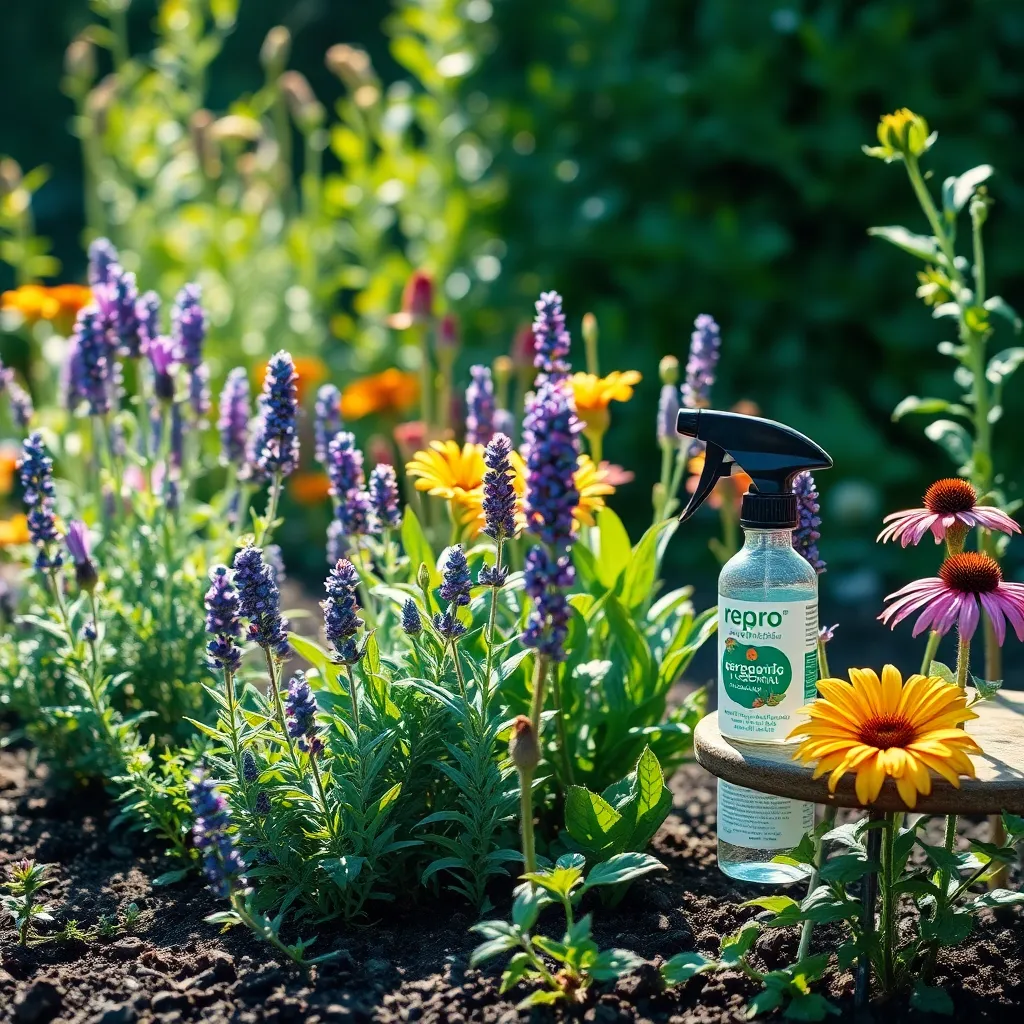
Dealing with pests and diseases might seem daunting, but it’s manageable with a few proactive steps. Start by inspecting your perennials regularly for any signs of trouble, such as discolored leaves or unusual spots.
Incorporating companion planting can be a natural way to deter pests. For instance, planting garlic or marigolds nearby can help protect your perennials from harmful insects.
Maintaining garden hygiene is crucial; remove any dead or diseased plant material promptly to prevent spreading. Also, practicing crop rotation and not planting the same species in the same spot every year can reduce disease buildup in the soil.
For those facing stubborn pest issues, consider using insecticidal soap or neem oil, which are both effective and eco-friendly. When applying these treatments, ensure you cover the plant thoroughly, especially the undersides of leaves where pests often hide.
Pruning Techniques for Perennials

Perennials benefit greatly from regular pruning, which encourages healthy growth and blooming. To start, assess the plant’s structure in early spring or after flowering. This timing ensures you don’t accidentally remove buds that will flower next season.
When pruning, use clean, sharp tools to make precise cuts. Remove any dead, damaged, or diseased stems first to prevent the spread of disease. This will also promote better air circulation within the plant, reducing the chance of fungal issues.
For most perennials, cutting back one-third of the oldest stems to the ground each year can rejuvenate the plant. This technique, known as “thinning,” helps maintain the plant’s shape and vigor. It also encourages new growth and increases blooming potential over time.
Advanced gardeners can practice “deadheading,” or removing spent flowers, to encourage a second bloom in some perennials. Focus on plants like coneflowers and daisies that respond well to this practice. Remember, proper pruning not only enhances the aesthetic appeal but also boosts the overall health of your plants.
Seasonal Care and Maintenance Tips
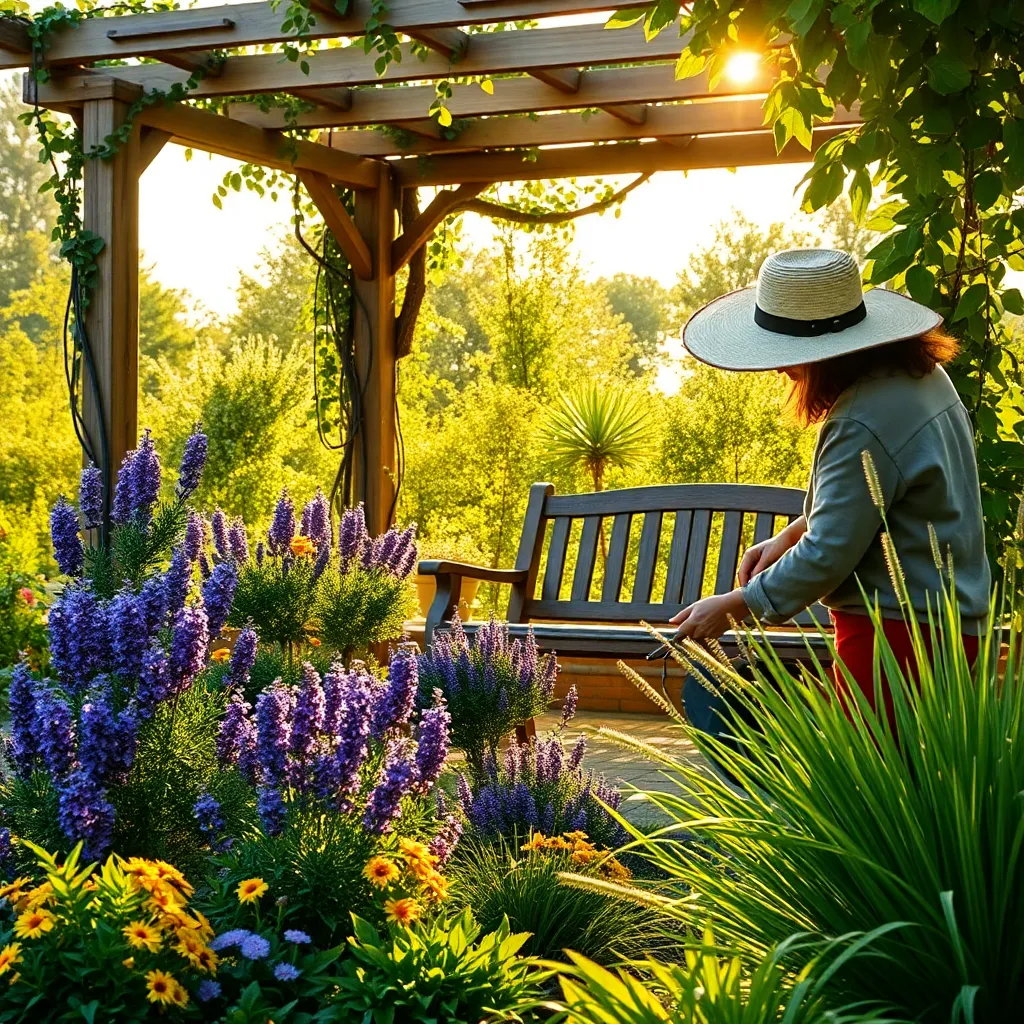
When caring for low-maintenance perennials, seasonal adjustments are key to ensuring their longevity and health. As the seasons change, so do the needs of your plants, which is why it’s important to tailor your care routine throughout the year.
In spring, focus on cleaning up and preparing your garden beds. Remove dead leaves and debris to prevent pests and diseases, and consider adding a layer of compost to enrich the soil before new growth appears.
As summer arrives, be mindful of your watering schedule. Most perennials prefer consistent moisture, so aim to water deeply once a week, especially during dry spells, to encourage deep root growth.
Autumn is the time to tidy up and protect your perennials for the colder months ahead. Cut back spent foliage to reduce the risk of overwintering pests, but leave a few inches above ground to protect the crown of the plant.
Winter is when many perennials enter dormancy, requiring minimal care. However, applying a layer of mulch can help insulate the roots, particularly in regions with harsh winters, ensuring your plants emerge healthy in spring.
Companion Planting with Perennials
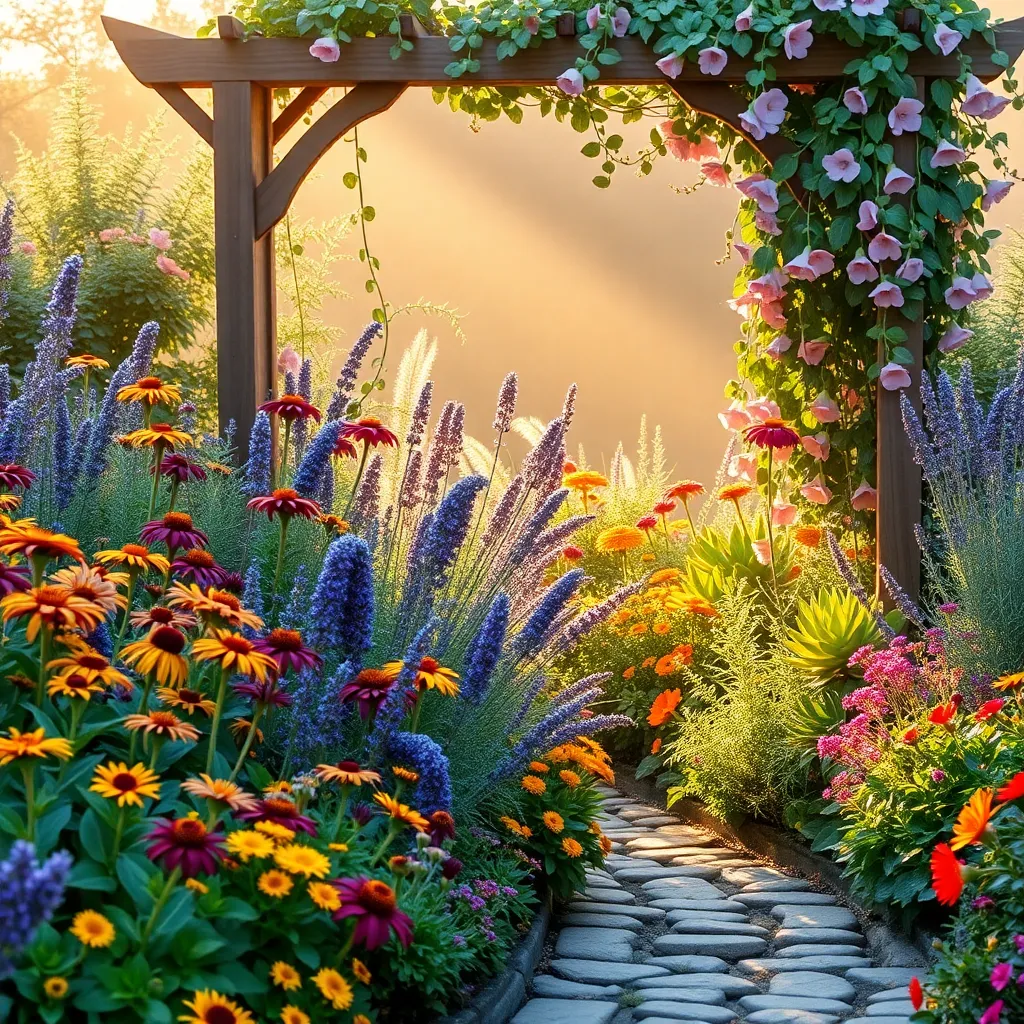
Companion planting is a powerful technique that can enhance the growth and health of your perennials. By strategically pairing plants, you can deter pests, improve soil fertility, and boost flowering. For instance, planting lavender with roses not only adds a delightful fragrance but also helps repel aphids. This combination thrives in well-drained soil with full sun exposure, making it a beautiful and functional duo for your garden.
When choosing companions, consider the specific needs of each plant to ensure they complement one another. Daylilies, known for their low-maintenance charm, pair well with alliums, which can deter unwanted insects with their strong scent. Both plants prefer rich, loamy soil and benefit from regular watering, especially during dry spells. This pairing not only fills your garden with vibrant color but also reduces the likelihood of pest infestations.
Additionally, some perennials can help improve the soil structure and nutrient availability. For example, planting legumes like lupines alongside other perennials can naturally enrich the soil with nitrogen through their root systems. Ensure these plants have access to plenty of sunlight and moderate watering to thrive. This approach not only promotes healthy plant growth but also reduces the need for chemical fertilizers.
For those seeking more advanced techniques, consider using companion planting to extend the blooming season. By pairing early bloomers like columbines with later-flowering perennials such as asters, you can maintain a continuous display of color. Both these plants prefer slightly acidic soil and require regular deadheading to encourage prolonged blooming. Implementing these strategies can transform your garden into a self-sustaining ecosystem that flourishes with minimal intervention.
Enhancing Gardens with Perennial Colors

To infuse your garden with lasting color, consider selecting a mix of perennials that bloom at different times throughout the growing season. This ensures your garden remains vibrant, providing continuous interest from spring through fall.
One practical approach is to plant perennials that offer not only beautiful blooms but also attractive foliage. For example, hostas provide lush greenery, while daylilies add bursts of color, creating a balanced garden aesthetic.
Beginner gardeners should start with hardy perennials like coneflowers and black-eyed Susans, which thrive in a variety of soil types and require minimal care. Regular watering, especially during dry spells, is essential, with a focus on providing about an inch of water per week.
For a more advanced touch, consider incorporating perennials that attract pollinators, such as bee balm and lavender. These not only add color but also support local ecosystems, enhancing your garden’s health and vibrancy.
Extending Bloom Periods Naturally
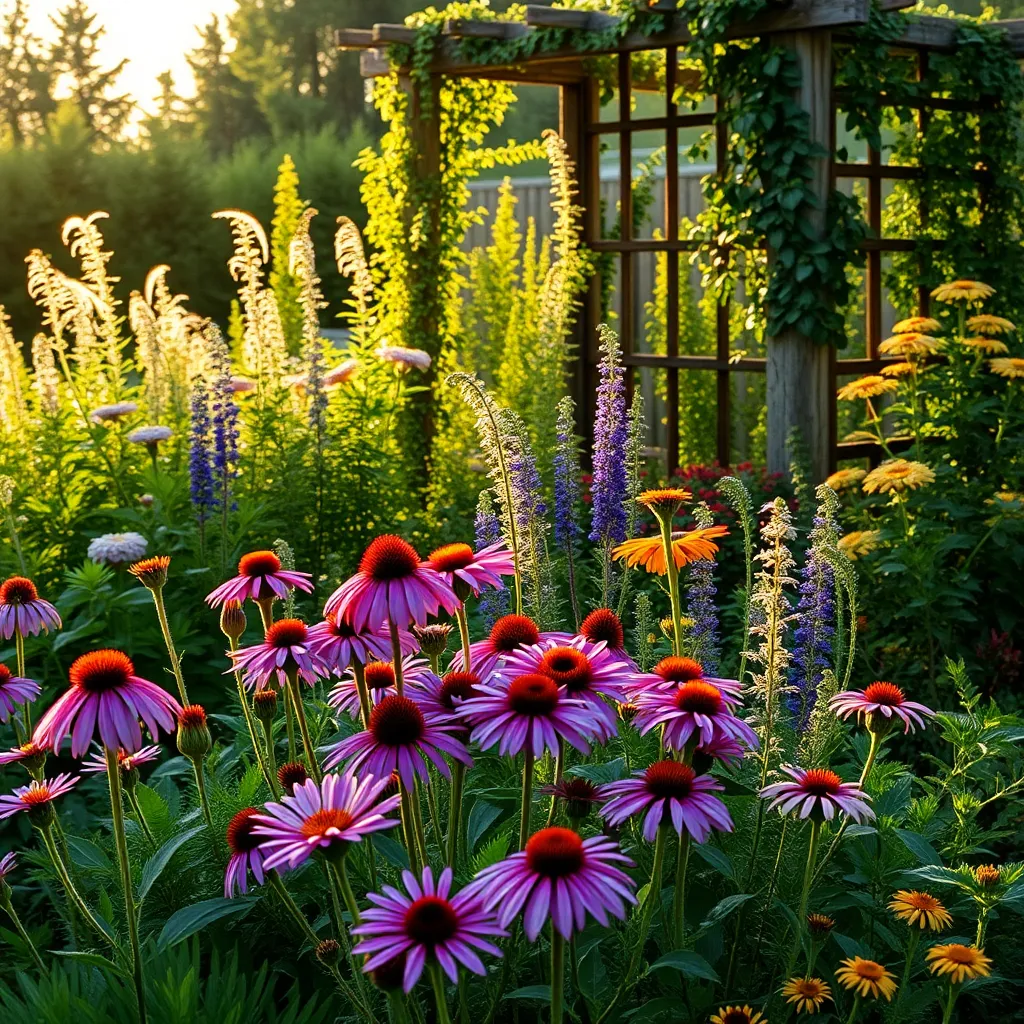
To naturally extend the bloom periods of your perennials, consider implementing strategic deadheading. By removing spent flowers, you encourage the plant to produce more blooms and prevent seed formation, which can prematurely end flowering.
Another effective technique is to ensure your plants have optimal growing conditions. This involves providing the right type of soil—such as well-draining loam—and maintaining consistent moisture levels, avoiding both drought and waterlogging.
For gardeners looking to maximize bloom time, stagger planting times of the same species. This means planting some in early spring and others a few weeks later, ensuring a prolonged display as each group reaches its peak at different times.
Incorporate companion planting to support longer blooming periods. Certain plants, like marigolds and nasturtiums, can deter pests naturally, reducing stress on your perennials and allowing them to focus on flowering.
For advanced gardeners, experimenting with mulching techniques can also extend bloom periods. Using organic mulches such as shredded bark or compost can regulate soil temperature and moisture, creating a stable environment for your perennials to thrive longer.
Sustainable Practices for Perennial Gardens
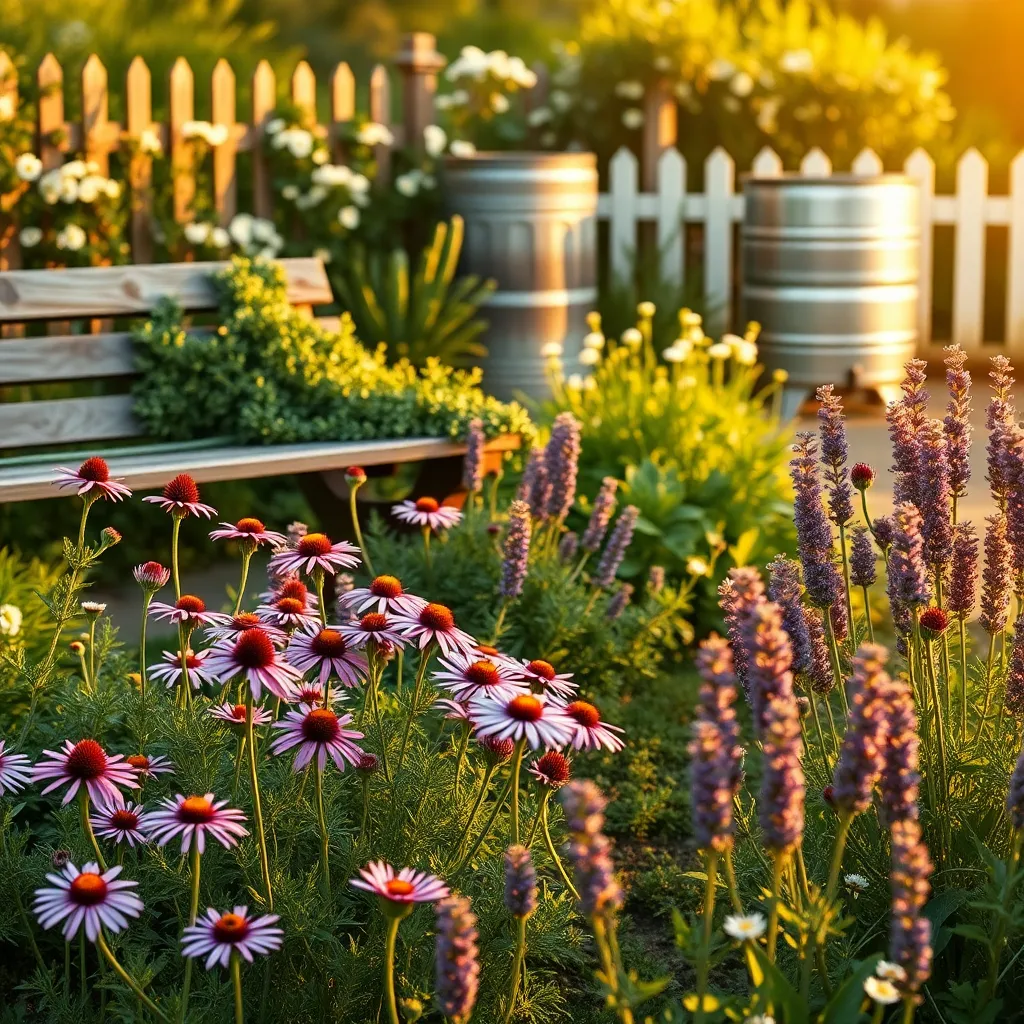
Implementing sustainable practices in your perennial garden starts with choosing the right plants. Opt for native perennials, as they are well-adapted to your local climate and require less water and fertilizers.
Incorporating organic mulch is another excellent strategy to enhance sustainability. This not only retains soil moisture but also suppresses weeds, reducing the need for chemical herbicides.
Consider creating a rain garden to manage water efficiently by capturing runoff and directing it to your perennials. This technique can significantly reduce your garden’s water consumption, especially during the dry season.
Using natural fertilizers like compost is highly beneficial for perennial gardens. Compost enriches the soil with nutrients and improves its structure, promoting healthy root systems.
Conclusion: Growing Success with These Plants
As we journeyed through the ’15 Low-Maintenance Perennials You’ll Love,’ we explored key relationship concepts that mirror the resilience and beauty of these enduring plants. From nurturing trust and fostering open communication to embracing individuality and practicing patience, each concept serves as a reminder that relationships, like gardens, thrive with care and understanding. We also delved into the importance of setting boundaries, celebrating successes, and maintaining mutual respect, all essential for a flourishing partnership.
Now, take a moment to reflect on these insights and choose one area to focus on in your relationship today. Whether it’s initiating a heartfelt conversation or simply expressing gratitude, small actions can cultivate profound growth.
Remember, relationships thrive on continual nurturing. Bookmark this article as your guide to revisit these principles and inspire ongoing improvement. Let it serve as a reminder that, much like perennials, relationships are a beautiful blend of resilience and renewal.
Looking ahead, envision a future where your relationship blossoms with vitality and joy. With each small step, you’re paving the way for enduring success. So, embrace this journey with optimism, knowing that every effort you invest today lays the foundation for a harmonious tomorrow.

